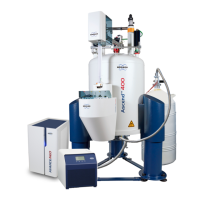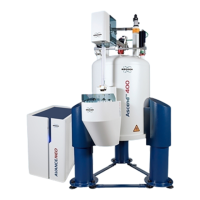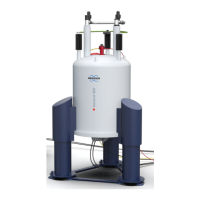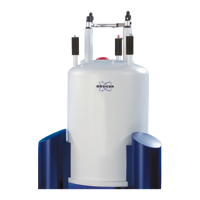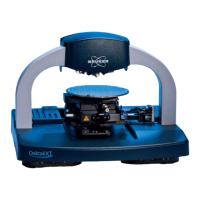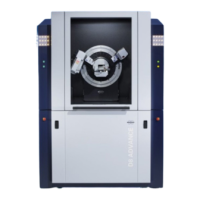Safety
16 H157655_1_008
2.4.2 Liquid Helium Refills
Liquid helium is the coldest of all cryogenic liquids, therefore it will condense and solidify any
other gas (air) coming in contact with it. The consequent danger is that pipes and vents may
become blocked with frozen gas. Vacuum insulated pipes should be used for transferring
liquid helium.
Liquid helium must be kept in specially designed storage or transport dewars. A one-way
valve is supplied to avoid air or moisture from entering the helium vessel. This is to prevent
ice from building and plugging the neck tubes. The 0.2 bar valve must be mounted at all
times even during a helium transfer.
Often, permanently installed helium gas lines are used to pressurize the liquid helium
transport dewars during the helium refills. Alternatively, helium gas cylinders can be used.
The helium gas cylinder should never be brought close to the magnet and should always be
kept well outside the 5 Gauss line. The gas cylinder should be secured to a wall or structural
column well outside the 5 Gauss line to prevent a dangerous accident. A He gas purity of 4.6
(99.996%) is recommended.
With the Aeon magnet, helium fills are typically needed only during the magnet installation.
Helium refills are not required during the normal operation given that there is no helium loss.
Helium top-offs or refills are to be done by Bruker engineers, these are needed during
cryocooler and helium compressor services and in case of power or cooling water failures if
no back-up utilities are present.
2.5 Earthquake Safety
In regions where there is a potential risk of earthquakes, additional precautions should be
taken to reduce the chance of personal injury or property damage through movement or
tipping of the magnet.
Many countries or regions have documented regulations, including building codes, regarding
earthquakes. Before installing a magnet system, it is highly advisable that you check with
local authorities on whether your area is prone to earthquakes and if there are any
regulations in effect.
If the installation site is regarded as an earthquake area, please contact Bruker for
information on earthquake securing equipment.
